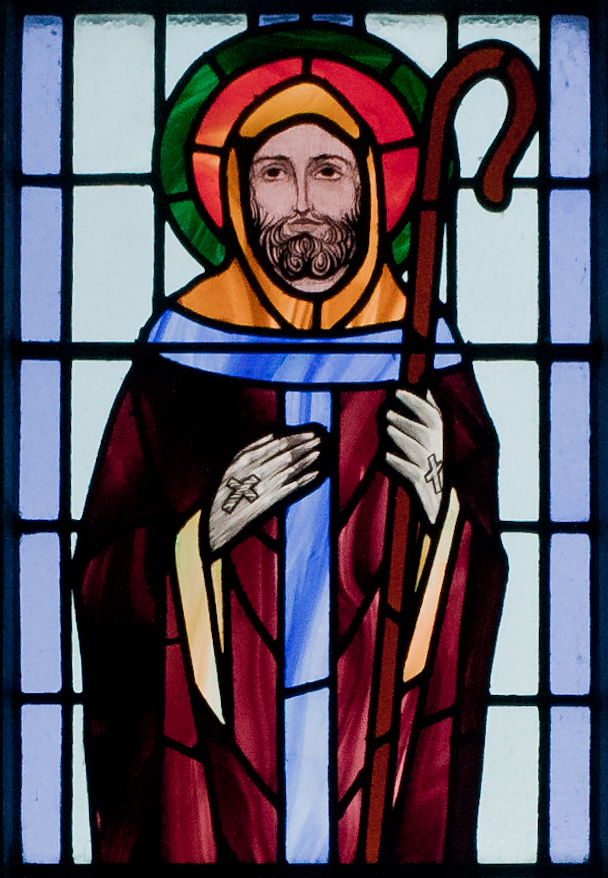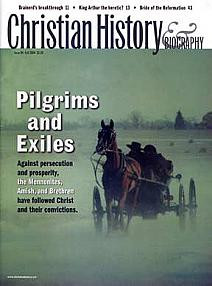COLMAN AND WILFRED DIVIDED OVER WHEN TO OBSERVE EASTER

[Detail of a stained glass window depicting St. Colman. St. Benin's Church, Kilbennan, County Galway, Ireland. —Andreas F. Borchert / [Creative Commons Attribution-Share Alike 4.0 International] Wikimedia.]
Admirers of Colman of Lindisfarne are divided on when to honor him. In the Scottish diocese of Argyll and in some of the little coastal isles he is honored on this day, 18 February. In other churches that observe his feast, he is recognized on the date of his death, 8 August.
A truly ardent and saintly Christian, Colman was nonetheless associated with division both during and after his life.
Born in Ireland near the beginning of the seventh century, he is thought to have been of noble birth but little is known of his early life. His first significant appearance in history is as a monk on the Isle of Iona in the Hebrides. That missionary center, founded by Columba, diffused the gospel throughout Scotland and Northumbria. Naturally Colman was reared in the Irish tradition which differed from the Roman in some practices such as how monks were tonsured and organized. Most importantly, the Irish differed with Rome over how the date of Easter should be calculated.
Under Aidan, the Irish established an influential monastery on the Isle of Lindisfarne and Colman followed Aidan there. He became Lindisfarne’s third abbot (661–664), following the death of Aidan’s successor Finan. While he was abbot, the great Synod of Whitby took place. Missionaries of the Celtic persuasion had evangelized Northumbria from the north and west, while missionaries from the Roman persuasion entered the region from the south and east. Northumbria’s king Oswy felt the church needed a unified practice. Hence the synod, which gathered in 664. Colman defended Celtic customs while on the other side Wilfrid defended Roman practices. Oswy decided for the Roman tradition. Bede devoted a chapter of his Ecclesiastical History to the dispute at Whitby.
Unwilling to repudiate his forbears, Colman turned over Lindisfarne to Abbot Tuda. With associates, he planted several churches in Scotland, but after a couple years withdrew with a number of Irish and English followers to the isle of Inishbofinde, taking with him some of the bones of Aidan. On his little isle he founded a monastery that followed the old Celtic traditions as opposed to the now-unified English practices.
His English and Celtic monks, however, could not agree and, to put an end to the strife between them, Colman found it necessary to separate the two factions. He founded a second monastery, known as Magh Eo (Mayo), for the English, keeping the Celts at Inishbofinde. He served as abbot of both monasteries until 670 when Gerard became abbot of Mayo. Colman continued as abbot of Inishbofinde until his death in 676.
—Dan Graves
----- ----- -----
For more on this episode in English church history read "Grace at the Negotiating Table" in Christian History #84, Pilgrims & Exiles: Mennonites, Amish, and Brethren






